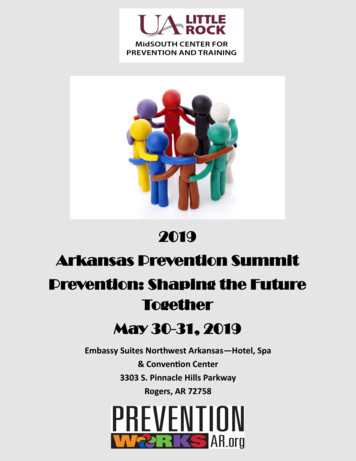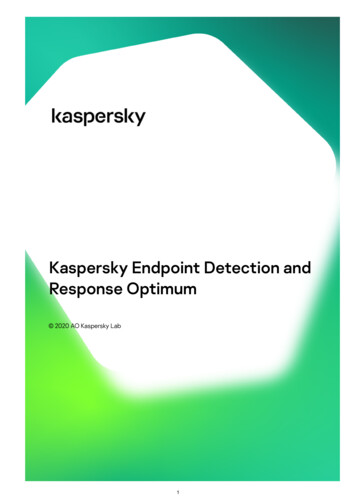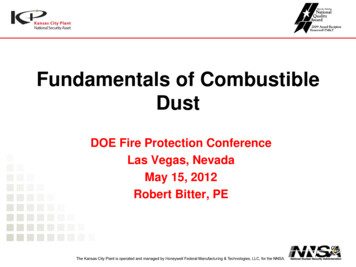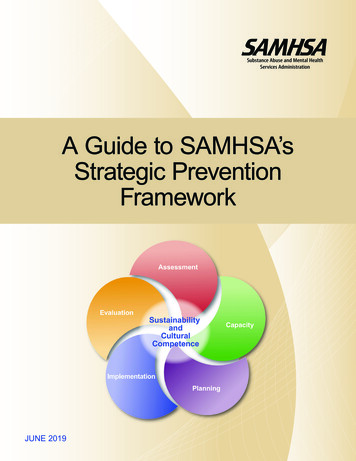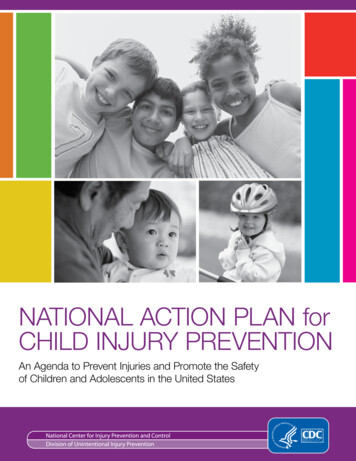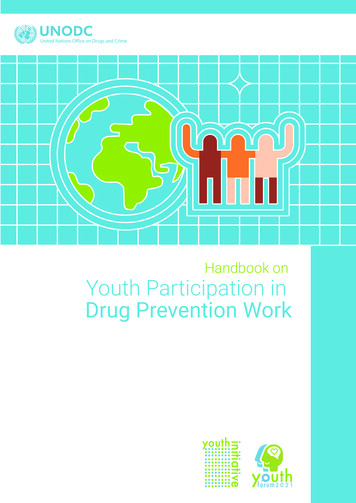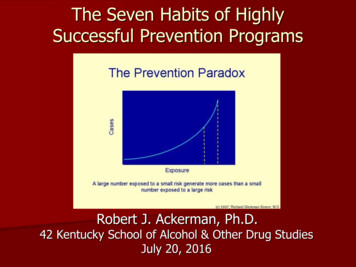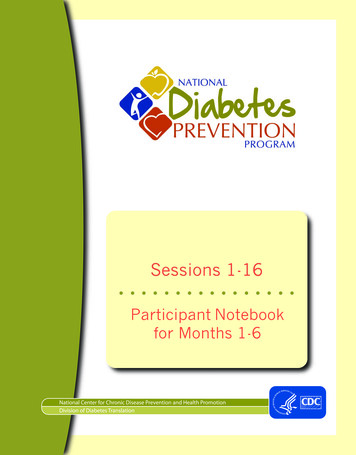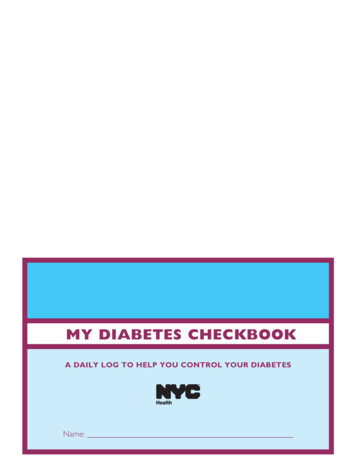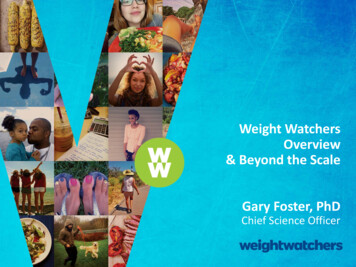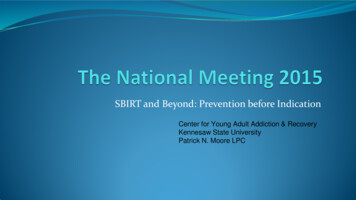
Transcription
SBIRT and Beyond: Prevention before IndicationCenter for Young Adult Addiction & RecoveryKennesaw State UniversityPatrick N. Moore LPC
CYAARCenter for Young Adult Addiction and Recovery CRCStudent AdvisorAOD EducationPeer EducationScreeningBrief InterventionsReferralsResearchRelapse PreventionCRC 101 early recovery(Moore, 2013)2
Peer Educators
ObjectivesDefine Prevention ParadoxSBIRT ReviewSee model powered SBIRTBeyond SBIRTCollaboration for radical changeExamine Causal Evidence of Addiction
The Prevention Paradox (Acute)Babor et al. 201064% of Alcohol related deaths & 70% of Alcohol related hospitalizations are Light andModerate Drinkers – Low Risk
Historic Perspective Facts & Relevance1750 to Early 1800s Sobriety “Circles” are formed within various Native American Tribes.1840 The Washingtonian Society 600,000 members in 5 years before declining1849 Introduction of the term Alcoholism by Swedish physician Magnus Huss1880s Treatment is now available by gender, ethnicity and drug type.1901 Charles B. Towns Hospitial for Drug and Alcoholic Addictions – Detox1907-1913 State laws passed calling for mandatory sterializaiton of “defectives” (mentally ill, developmentally disabled, alcoholics1935 Bill Wilson and Dr. Bob Meet1944 Research started Yale Center of Alcohol studies, (moved to Rutgers), National Committee for Education on Alcoholism (todaythe National Council on Alcoholism and Drug Dependence.1951 Alanon Family Groups is organized.1960s Insurance reimburses for treatment, Armed forces build programs.1970 Congress passed the “Comprehensive Alcohol Abuse and Alcoholism Prevention Treatment and Rehabilitation Act” NIAAA1980s Just Say No; MADD, special populations treatment, drug free workplance, War on Drugs, 1st Drug Court ; SOAR , SBIRT1990s adolescent treatement approaches2000s Expansion of SBIRT2015 Beyond SBIRT Johann Hari – Chasing the scream (connectedness)2015: 21 Intervenitons found for 18-25 yo re: Alcohol and/ or Drug www.nrepp.samhsa.gov National Registry of Evidence –basedPrograms and Practices. Either for indicated or evidence was frequency/quantity265 Years: Causation? Measurement? Prevention? Low Risk Intervention? Progress? Explains Prevention Paradox / ontreatment%26RecoveryInAmerica.pdf
Science PerspectivePublic Health Model: Disease can be understood and treatedby understanding the interaction of the Agent,Environment, and Host.Risk Model:Hazard x Exposure RiskConflation:Hazard(Alcohol) x Exposure (Environment) Risk (Host)
New Models Review How Applied
Selection Bias ModelWhere to put extra armor?Collect and study evidence.Put the armor where there is no damage.Abraham Wald (Livio, 2013)
Change by Talking Model Combat Demoralization (Define Demoralization)Emotionally Charged Confiding Relationship (Inform)Rationale (Model to explain Acute & Chronic outcomes)Rituals (Specific Directions to Change or Maintain)Healing setting ( With Peers in Classroom)Opportunities for new learning (Outside the Classroom)(Frank, 1998)
Communications Model Risk Communications: A Mental Model Approach wasinvestigated. (2002, Morgan et al) Morgan et al with the help of several grantsincluding grant IU19AI 38513 from The National Institute for Alcohol Abuse andAlcoholism, created a text book to generate Mental Models to deliver and measureinterventions to people with limited time, energy and attention. The focus here is on change in risk comprehension and response.The authors point out this perspective creates a common method for treating diverseproblems. It is the ignorance of or mistaken beliefs about risk that is intervened on.Morgan et al defines risk communications as “communication intended to supplylaypeople with the information they need to make informed independent judgmentsabout risks to health, safety, and the environment.
Cont’D However, Morgan cautions “Betterunderstanding cannot guarantee changes in behavior;those depend on how people perceive benefits as well asrisks, and on their resources and constraints.”
Education Model (Ambrose et al., 2010) Student’s prior knowledge can help or hinder learning.How students organize knowledge influences how they learn and apply what they know.Students’ motivation determines, directs and sustains what they do to learn.To develop mastery, students must acquire component skills, practice integrating them, andknow when to apply what they have learned. Goal-directed practice coupled with targeted feedback enhances the quality of studentslearning. Students’ current level of development interacts with the social, emotional, and intellectualclimate of the course to impact learning. To become self-directed learners, students must learn to monitor and adjust their approachesto learning.
MI model:Who is the smartest person in the room? Introduce Ambivalence – might have an issue Increase discrepancy (remove Ambivalence) – Ihave an issue Encourage Low Risk – keep doing the right thing Lower Resistance to Tx – where do I get help?No Assessment like Self Assessment(Miller & Sanchez, 1994)14
Empowerment Model (80s) How and Why it works (Causality) Measure over time for short and long term goals Empowerment is a Host process Theoretical Orientation linking above(Cummings, 2001)
Perception GUYS Daniel Kahneman - Affective Bias David Gardner - A baseball and bat 1.10 Jared Diamond - What kills people in the Jungle? LowRisk / Frequently Occurring David Ropeik - Perception Gaps , “we are not just anamygdala and a puddle of stress hormones.” We can reducethe perception gap through conscious awareness andchallenging our affective response system from time totime.
Updated Science PerspectivePossible to integrate the Host now – not in 200 more yearsHazard(Alcohol) x Exposure (Environment)x Host (Risk Perception) Risk
Presented By:Stephen H. O’Neil, DirectorGeorgia BASICS SBIRT Project2 Peachtree Street, NW, Suite 22-265Atlanta, GA 30324(404) 651-8450shoneil@dhr.state.ga.us(O’Neil, 2012)19
IfWe could provide a 100% cure to every substancedependent person in the United States we wouldn’t beclose to solving most of the substance relatedproblems in our country.(O’Neil, 2012)21
The SBIRT Concept SBIRT uses a public health approach to universalscreening for substance use problems. SBIRT provides: Immediate rule out of non-problem users; Identification of levels of risk; Identification of patients who would benefit from brief advise,and; Identification of patients who would benefit from higher levels ofcare. Progressive levels of clinical interventions based on need andmotivation for change.22
Let’s Review Screening does not provide a diagnosis.Screening does provide immediate rule-out of no risk/low risk users.Screening does provide immediate identification of level of risk.There are 2 levels of screening: Universal. Targeted. There are 4 types of intervention: Feedback. Brief Intervention. Extended Brief Intervention or Brief Treatment. Referral to a higher level of care.
Let’s Review SBIRT is a systems change initiative requiring us to re conceptualize, re-define, and re-design our entire approachto substance use problems and services.SBIRT uses a public health approach.The current model defines the problem as dependence.The SBIRT model defines the problem as excessive use.SBIRT recognizes a continuum of substance use behavior, acontinuum of substance use problems, and a continuum ofsubstance use interventions.24
The SBIRT ModelA Continuum of Substance UseSocialUseAbstinenceExperimentalUse(O’Neil, 2012)AbuseBingeUseDependence25
Dependent5%Brief Intervention andReferral for additionalServices20%Low Risk orAbstinenceDrinking Behavior(O’Neil, 2012)75%No Intervention orscreening andFeedbackIntervention Need26
Model Driven SBIRTFunction Screen Brief Intervention Referral to Treatment How do I know?ModelUse Selection BiasChange by TalkingEd. and Com. modelsChange by Talking
Disease ModelHow do I know?30 day test3 BsAlcoholics Anonymous 1955Demoralization: Can’t tell right from wrong.
Recovery ModelAlcoholics Anonymous 1955
BEYOND SBIRT Selection Bias Model: Prehab is the New Rehab Other Useful Models : Brief Interventions New Objectives: Measuring Risk
New Objectives Identify and Intervene on 20%Educate, encourage and prevent 75%Introduce Ambivalence to 5%Before IndicationBefore ProgressionInterrupt Prevention Paradox
Research & Results Hypothesis: Education increases risk perception judgment Experiment: N 457 College Freshmen / peer ed Results:There is a positive relationship
No one wants or chooses addiction or sudden tragedy.How hard can this be to prevent?
Earthlings: Great Perceivers, Poor InterpretersBeing Careful is not asubstitute for Judgment
New Models Risk Factors Motivational Assessment Prevention Program
The answers lead to a new modelWhat influencesperception?Risk Factors(Ropeik 2010)
The human brain over the last 100,000 years is remarkable for Fear and Riskperception calculations. Problem: We don’t live in caves anymore Two Brain Theory: Risk Factors start here.1. Feeling (Gut), very fast,uses predetermined rules, very decisive.2. Logic (Head) very accurate, notvery fast or influential. RationalJudgment comes from Gut; Head rationalizes.
The power of Gut A ball and bat cost 1.10 together. The bat cost 1.00 more than the ball. How much does the ball cost?
Power of Head x (x 1) 1.10 2x 1 1.10 2x .10 X .05
What influences Risk Perception? Risk Factors – usually keeps us safe – can resultin Risk Perception Gaps.Risk Factors & HeuristicsTrustRisk vs. BenefitControlChoiceNatural or Man madePain and SufferingUncertaintyCatastrophic or ChronicCan it happen to me?New or Familiar RiskRisks to y(Ropeik 2010)Framing effectCategorizationFallacy of a Small SampleProblems with ProbabilityLoss AversionEndowment EffectAnchoring and AdjustmentAwareness/Ready Recall EffectInnumeracyOptimism BiasDiagnosis BiasValue AttributionEscalation of CommitmentAvailabilityNaïve diversificationAffect heuristicEffort heuristicFluency heuristicGaze heuristicPeak-end ruleRecognition heuristicScarcity heuristicSimilarity heuristicSimulation heuristicSocial ProofTake-the-best heuristic
Risk Factor Principles Each factor can increase or decrease fear. (Breakthrough) Many factors combine in a given situation. Biases are other inputs Risk Perception Factors are universal but not the samedependent on personal experience.(Ropeik 2010)
The answers lead to a new modelWhat influences perception?Risk Factors:#1 Risk /Benefit#2 Good Bad#3 New Familiar#4 Social Proof#5 Commitment(2012) Reyna
Risk Factors explain why#1 RISK / BENEFITPerception is Powerful in Lifestyle Choices.
If familiar or new andperception “feels” good GoodLow RiskThen benefits increase as risk isperceived as low.The opposite is also true and involves fearof loss#2 GOOD / BAD
Evolution’s answer to Google.How to sort and survive too much InfoWhat’s important?Is it new?Everything else – Habituation (off switch)Remember driving the first time?#3 NEW / FAMILIARSurvival Mechanism
#4 SOCIAL PROOFSocial Proof (not peer pressure) Social proof is a type of conformity. When a person is in a situation wherethey are unsure of the correct way to behave, they will often look to othersfor cues concerning the correct behavior. When "we conform because webelieve that other's interpretation of an ambiguous situation is moreaccurate than ours and will help us choose an appropriate course ofaction,"[1] it is informational social influence. This is contrasted withnormative social influence wherein a person conforms to be liked oraccepted by others. “http://en.wikipedia.org/wiki/Social proof”
Social Proof
3/27/772015 Virgin Galactic SpaceShipTwo Piloterror; unlocked tail boom too early#5 CommitmentMandated Rest Periods
What influences Negative Outcomes? Simple.Hazards that carry a low risk but encountered frequently Let’s camp here! Odds are only 1/1000 a tree falls on us tonight. 1/1000 Certain Death in a few Years Never sleep next to dead trees Constructive ParanoiaWhat Kills People inthe Jungle?(Diamond, 2013)
StagePhysicalMentalPerceptionOutcome0No tolerance issuesNo obsession issuesConstructive ParanoiaStable Risk / BenefitNo progressionNo smoking / No drunksMature judgment1No tolerance issuesNo obsession issuesNew / GoodSocial ProofAcute deaths & AccidentsOr to Stage 0 or 22Tolerance adjustmentImpulseValue AttributionGroup PolarizationEuphoric RecallEscalation/CommitmentAcute deaths & AccidentsOr to Stage 0 or 33Tolerance peaksPreoccupationFamiliar / GoodConfirmatory BiasOptimisticAddiction progressionOr to Stage 0 or 44WithdrawalObsessionDesperate for change Cling to familiarPain & SufferingLoss AcceptanceCan’t stop, can’t quitRecovery (abstinence) orJails, Institutions, Death* Copyright2013, Patrick Moore MA LPC
New Model Needs a New Assessment. What stage were you at? What Stage are you at? What Stage will you be at?(Moore, 2013)* Copyright2013, Patrick Moore MA LPC
Repeated Measures0Direction of Risk* Copyright2013, Patrick Moore MA LPC10Velocity of Risk
OperationalizeINTERVENTIONAny decrease afterintervention and 0or 1* CopyrightMAINTENANCENo change and 0 or1 from last twocolumns.2013, Patrick Moore MA LPCPREVENTIONAny score ending inan increase or 2.
Are we doing any good?
N 457 Results
requencyTotal* Copyright2013, Patrick Moore MA LPCFreqency %271087654322221111111111111192Cumulative %1%1%1%Cumulative Fr %8%7%5%4%3%2%1%% Sample20.13%
DependentHazardousHarmfulSymptomaticLow Risk orAbstinenceMAPP Stage(O’Neil, 2012)5%20%75%Lower ResistanceNOWIdentify & InterveneBEFORE IndicationLowerCodependence;Encourage LRIntervention Need59
Intervention SRTargetResults* Copyright20%20%Maintenance LR75%74%2013, Patrick Moore MA LPCPrevention HR5%6%
* Copyright2013, Patrick Moore MA LPC
N 457WasIsWill beeCHUGWHOTAV1%1%0%2%5%6%Some Risk 13%14%5%18%20%20%Low Risk85%94%80%75%74%High Risk* CopyrightFall 201486%2013, Patrick Moore MA LPC
Collaboration SBIRT and EDBIRT End of Prevention Paradox
Similar but differentSBIRTMAPPIntervene HR progression (risk reduction)Intervene on LR progression (Directional AcuteTarget 25% Some Risk & High RiskTarget 100% Some Risk & Low Risk & High RiskModel None / DM is BIModel DM and RFContinuumStagePostive NegativeMeasure direction before and after intervention
5%20%75%Low Risk Intervention(Patrick N. Moore 2015)High Risk Intervention65
0%5%95%Low Risk Intervention(Patrick N. Moore 2015)High Risk Intervention66
Perception Gaps: Nomothetic Causation? The variables must be correlated The cause takes place before the effect The variables are nonspurious Since no “complete cause” in Social Resarch Necessary cause must be present Sufficient cause must be presentBabbie, 2004
There’s More Previous Interventions
Repeated Measures21Intervention0
Intervention* CopyrightMaintenancePreventionTotal TSTPreintervention3%9%1%13%Prerisk13%8%3%23%High risk2%0%2%4%Low risk3%57%0%60%2013, Patrick Moore MA LPC
17% of interventions prior to eBIRT: Another 20% after eBIRT . High Risk 6% is all that isleft. Of these 26 students, only six selected above stage 2 going forward.InterventionMaintenancePreventionTotal TSTChange LocusTotal Change LocusPre-intervention3%9%1%13%Low Risk base57%Pre-risk13%8%3%23%EDBIRT/MAPP20%High risk2%0%2%4%Prior toEDBIRT/MAPP17%Low risk3%57%0%60%High Risk6%100%
96% of 457 freshmen responded to MAPP by selecting stage 0 or stage 1 going forward.The smallest category has the most Pre High Risk. Of the 26 students in the Prevention High RiskCategory only 6 chose above stage 2 going forward.Time Matters in a Progressive Model. Waiting for Indication is too late
Some Risk is estimated at 20% to 22.7% by WHO and SAMHSAThe Athletic Sample is 12.57%Substance Abuse 101 is 40.95%
MAINTENANCETAVFrequencyCumulative Fr. Cumulative Fr % % 0175%5817%3%4112%9%211* CopyrightFreqency 21%41110%10%Totals3392013, Patrick Moore MA LPC74.18%
PREVENTIONTAVFrequencyFreqency %Cumulative Fr. Cumulative Fr % % 3214%312%03214%28%33214%14%Totals26457* Copyright2013, Patrick Moore MA LPC5.69%
High Risk CommentsThe Educator was great and very strong to stand and give a testimonyThis has been an eye opener as far as my issues w/alcohol. I have been aware of my issues and problems w/drinking, but this has been veryrevealing as to some the reasons.I drink and use amphetamines on a weekly basis. I don't find it a necessity but definitely a very strong want. I want to slow down eventually.The 4 stages really helped me realize that I may have a bigger problem than I thought I could really relate to a lot of the mental processesdescribed in the addiction cycle.This presentation opened my eyes. I like the speaker's use of personal experience.While the presentation is helpful and does encourage thoughtful decision making, it only seems like it'll reach stages 0-2 because 3&4 probablywill deny having a problem & be dismissive.smiley face
Some Risk CommentsI feel that is something that is important for all college students to know. Educator knew what he was talking about very well. I would make it on an easierlevel so people don't get as bored and pay more attention.Thank you for being so informative, I'm going to change some of my habits.The 70% of death being low risk is scary. I had so many drinks that other night my room mate turned me on my side B4 threw up & probably saved mylife. Thank you.It's interesting to know that most people who are harmed by alcohol are those that are not necessarily addictedI am a member of a fraternity and drinking is synonymous with Greek life so it's hard to be a member and not get hammered every weekend.This helped me open my eyes to see the truth about alcohol and drug used / abuse. Thank you so much for taking the time to teach me, and help me become aware ofthe effects and the future effects this usage withholds. Heart shape.You helped me understand me ten times better and the risks I am at. Thank you for helping me out.I have had a family member at stage 4 and this presentation helped me better understand what he is/was going throughStages most helpful.Good presentation. I learned a lot of new things.Good presentation. Made me think more about what I do.Very interesting - enjoyed learning more into this concept. Better understanding on my part.I like to think I am responsibleThis was a nice presentation.
Low Risk CommentsThis was fantastic, thank youvery good presentationI enjoyed learning about the processes of addiction on a deeper level .The examples and explanations were helpful and created a better and unique understanding.This was a very informal talk. I enjoyed the information sharedGreat for freshman, allowing them to be aware of the consequences of having "fun" without limits.Lecture was helpful on understanding the evolutionary reason behind addiction. How the brain works.Lecture was informative and helpful in understanding how our brains work and the process of addiction.It was helpful to see the concept of how people become addicted and risk factors of addiction.I wasn't a smoker until I came to campus, made some friends, and picked up the habit. I know its bad, yet I still do it.Over all the presentation was well constructed and the speaker did a phenomenal job.Very good presentation. I hope that all learning communities see this presentation.All freshmen must know this information about addictions.
Results: Increase Risk Perception Decrease Negative Outcomes Reduce addiction Reduce Codependence Accelerate Recovery The beginning of the end of addiction
MAPP* Motivational Assessment Prevention Program(Moore, 2013)* CopyrightMotivational Interviewing in a box20 million High School students willenter College this fall4 million Prehab opportunities.2013, Patrick Moore MA LPC80
ReferencesAlcoholics Anonymous. (1955). New York, NY: Alcoholics Anonymous Publishing, Inc.Altman, Drew E. Accompanying Statement by Drew E. Altman, PhD, Chair, (2012) Addiction Medicine: Closing the Gap Between Science andPractice. The CASA Columbia National Advisory Commission on Addiction airmanStatements.aspx?articleid 681&zoneid 31Ambrose, Susan A. Bridges, Michael W. DiPietro, Michele, Lovett, Marsha C. Norman, Marie K. (2010). How Learning Works 7 Research-Based Principlesfor Smart Teaching. San Francisco, CA: John Wiley & Sons, Inc.Babbie, Earl. (2004) The Practice of Social Research 10th Edition. Belmont, CA. Wadsworth/Thomson Learning.Babor, Thomas; Caetano, Raul; Casswell, Sally; Griffith, Edwards; Giesbrecht, Norman; Graham, Kathryn; Grube, Joel; Hill, Linda; Holder, Harold; Homel,Ross; Livingston, Michael; Osterberg, Esa; Rehm, Jurgen; Room, Robin; Rossow, Ingeborg. (2010).“ Alcohol: No Ordinary CommodityResearch and public policy” second edition. New York, New York: Oxford University Press Inc.Babor, Thomas F. Higgins-Biddle, John C. (2001). Brief Intervention For Hazardous and Harmful Drinking, A Manual for Use in Primary Care. WorldHealth Organization, Department of Mental Health and Substance Dependence, WHO/MSD/MSB/01.6bBarlow, David H. , Durand, Mark V. (2005). Abnormal Psychology An integrative Approach 4th ed. Belmont, CA: Thomson Wadsworth p. 379.Bazerman, Max H., Tenbrunsel, Ann E. (2011). Blind Spots Why We Fail to Do What’s Right and What to Do about It. Princeton, N.J: PrincetonUniversity Press.Botvin, Gilbert J. , Griffin, Kenneth W. (2007). School-based programmes to prevent alcohol, tobacco and other drug use. International Review ofPsychiatry, December 2007; 19(6): 607-615Botvin, Gilbert J. (2000). Preventing Drug Abuse in Schools: Social and Competence Enhancement Approaches Targeting Individual-Level EtiologicFactors. Addictive Behaviors, Vol. 25, No. 6, pp.887-897.
Braufman, Ori and Braufman, Rom. (2008). SWAY The Irresistible Pull of Irrational Behavior. NewYork, New York: Doubleday.Correia, Christopher J., Murphy, James G. and Barnett, Nancy P. (2012). College Student Alcohol Abuse: A guide to Assessment, Intervention, and Prevention:New Jersey: John Wiley & Sons.Cummings, Sheila. (2001). An Empowerment Model for Collegiate Substance Abuse Prevention and Education Programs. Rochester, NY: University ofRochester.Diamond, Jared. (January 28, 2013). That Daily Shower Can Be a Killer. New York Times, Science Section, New York, New York.Erwann, Michel-Kerjan; Slovic, Paul. (2010), The Irrational Economist: making decisions in a dangerous world. New York, NY: PublicAffairs, a member of thePerseus Books Group.Frank, Jerome D., Frank, Julia B. Persuasion and Healing. A Comparative Study of Psychotherapy 3rd edition. (1993). Baltimore, Maryland: The Johns HopkinsUniversity Press.Foster, Susan E. , Richter, Linda, Vaughan, Roger, et al. Casa Columbia. (2012) Addiction medicine: closing the gap between medicine andscience. http://www.casacolumbia.org/templates/publications reports.aspx .Gardner, Daniel. (2008). The Science of Fear Why We Fear the Things We Shouldn’t – and Put Ourselves in Greater Danger. New York, New York: Dutton,Penguin Group (USA) Inc.Houpis, Constantine H. Rasmussen, Steven J. Garcia-Sanz, Mario. (2006). Quantitative Feedback Theory Fundamentals and Applications 2nd edition. BocaRaton, FL: CRC Press, Taylor & Francis Group,Howard, George S.; Nathan, Peter E. , Editors. (1994). “Alcohol Use and Misuse By Young Adults”. Notre Dame, Indiana: University of Notre Dame Press,Jacobson, Neil S., Follette, William C., Revenstorf, Dirk. (1984). “Psychotherapy Outcome Research: Methods for Reporting Variability and Evaluating ClinicalSignificance”, Behavior Therapy, 15:336-52.Krietman, Norman, M.D. , F.R.C.P., F.R.C.Psych. (1986). “Alcohol Consumption and the Preventive Paradox” British Journal of Addiction (1986) 81, 353-363.Kahneman, Daniel. (2011). Thinking Fast and Slow. New York, NY: Farrar, Straus and Giroux.
Kahneman, D., Slovic, P., & Tversky, A. (1982). Judgment Under Uncertainty: Heuristics and Biases. New York: Cambridge University Press.Livio, Mario. (2013). Brilliant Blunders From Darwin to Einstein Colossal Mistakes by Great Scientists That Changed Our Understanding of Life and the Universe.New York: Simon & Schuster ebook NewYork.Manaster, Guy J. Corsini, Raymond J. Individual Psychology. Theory and Practice. (1982). US: Adler School of Professional PsychologyMcLeod, John. (2003). Doing Counseling Research 2nd edition London England: Sage Publications LtdMeyers, Isabel B., Myers, Peter B. (1995). Gifts Differing. Mountain View, CA: Davies-Black Publishing,Miles Matthew, B., Hubeman, Michael A. (1994). Qualitative Data Analysis. Second edition. Thousand Oaks, CA: Sage Publications Inc.Miller, William R. Rollnick, Steven. ( 2002). Motivational Interviewing. Preparing People for Change. Second edition. New York, NY: The Guilford Press.Miller, William R. Sanchez, Victoria C. (1994). Motivation Young Adults for Treatment and Lifestyle Change editors: Howard, George S. and Nathan, Peter E. 1994Alcohol Use and Misuse by Young People. Notre Dame, IN: University of Notre Dame PressMorgan, Granger M., Fischhoff, Baruch., Bostrom, Ann., & Atman, Cynthia J. (2002). Risk Communications: A Mental Model Approach. New York New York:Cambridge University Press,Reyna , Valerie. (2013). as seen in “Why the Teen Brain Is Attracted to Risk” Article on the web, no author.Ropeik, David. (2010). How Risky Is It, Really? Why Our Fears Don’t Always Match the Facts. New York, New York: McGraw Hill.Sandman, Peter M. (2009). “Climate Change Risk Communication: The Problem of Psychological Denial” www.psandman.comSchinke, Steven P., Gilbert ,Botvin J. , Orlandi, Mario A. (1991). “ Substance Abuse in Children and Adolescents”, Newbury Park, CA: Sage Publications Inc.Silver, Nate. (2012). “The Signal and The Noise Why So Many Predictions Fail – but Some
Don’t” . New York, New York: The Penguin Press.Slovic, P., Peters E. (2006). Current Directions in Psychological Science volume 15, Number 6. Downloaded from cdp.sagepub.com at UNIVWASHINGTON/GALLAGHER LIB on September 15:322 Sage Publications.Smagorinsky, P., Cook L. S., & Johnson, T. S. (2003). The Twisting Path of Concept Development in Learning to Teach. Teachers College Record. 105, 13991436. Retrieved February 5, 2006 from the PsycINFO database. http://search.epnet.com/login.aspx?direct true&db psyh&an 2003-07683-001Spurling, C. Maria; Vinson C. Daniel (2005). “Alcohol-Related Injures: Evidence for the Prevention Paradox. Annals of FamilyMedicine www.annfammed.org Vol. 3, No. 1 January/February 2005Stiles, William B. (2003). Qualitative Research: Evaluating the Process and the Product. Handbook of Clinical Health Psychology. Edited by S. Llewelyn and P.Kennedy. Hoboken, NJ: John Wiley & Sons, Ltd.
2015 Beyond SBIRT Johann Hari – Chasing the scream (connectedness) 2015: 21 Intervenitons found for 18 -25 yo re: Alcohol and/ or Drug
